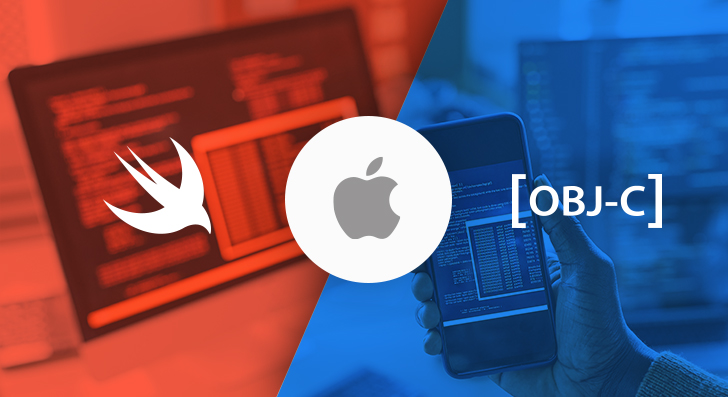For iPhone app development, it is tough to choose the perfect programming language since it will directly impact your project’s success.
So, there are two main contenders in this area: Swift and Objective-C. Both of these frameworks have distinct characteristics, histories, and communities that cater to different developer needs and project requirements.
Objective-C is an original language for iOS development that has led for years with its object-oriented nature and dynamic runtime capabilities. However, as technology gets advanced, so do the programming aspects. This was a stage where the market created a dire need for any other sustainable stack. Here comes Swift as a winning option to address the limitations of its predecessor while enhancing performance, safety, and developer experience.
As an iPhone app development company, you might be in the dilemma of which language to adopt for your next iPhone project. Like should you go with tested and tried Objective-C for its extensive library support and legacy code? Or is it time to start something new with fresh and innovative Swift because it has a cleaner syntax and a focus on safety?
To help you decide, we have broken down the dissimilarities between Swift and Objective-C with the features and benefits of each. This guide can be helpful if you are starting your new iOS project or simply want to furnish your skill set.
A Quick Overview of Swift and Objective-C
Swift is a modern programming language that was introduced back in 2014 as a fresh, efficient option for iOS app development. It is admired due to its readable syntax, safety features, and speed, making it a perfect fit for newcomers and experienced developers.
Conversely, Objective-C dates back to the 1980s. It was the language of choice for Apple development for decades before Swift came along. While it may look a bit dated, Objective-C is still useful, primarily for legacy codebase.
1. Syntax and Readability: The Look and Feel
Swift possesses a clean, concise, and easier-to-read syntax than Objective, but it might feel complicated if you are not used to it. Let’s take an example:
// Swift Code Example
let greeting = “Hello, World!”
print(greeting)
// Objective-C Code Example
NSString *greeting = @”Hello, World!”;
NSLog(@”%@”, greeting);
As you can see, Swift feels more approachable and straightforward, which can reduce development time and make it easier for new team members to understand.
2. Performance
Yes, Swift is faster in many cases. Swift was designed to be efficient, and Apple has focused on optimizing it for speed, particularly with memory management. This doesn’t mean Objective-C is slow; it’s still capable, but for resource-heavy tasks, Swift typically has the edge.
3. Safety
Swift was built with safety in mind, with different useful features that help prevent common errors like null pointer exceptions. Objective-C, on the other hand, does not include any safety features, so it is a must for your iPhone app development company to be cautious when handling memory and pointers.
4. Interoperability
This is a massive yet often overlooked aspect when choosing their programming languages for your iPhone app development niche. Both can be used in Swift and Objective-C collectively within the same project. This is an ideal scenario if you have a legacy in Objective-C but still admire new features in Swift.
For example, you develop a large-scale iOS app with Objective-C but start adding Swift files for new functionality. Both languages can communicate to let you gradually move toward Swift if this is a goal.
5. Learning Curve
With an easy learning curve, Swift is quite a wise option for those who have had short years in iOS app development. It resonates with other modern languages and creates a sense of familiarity while using it, but only if you have previously worked on languages like Python, JavaScript, or Ruby.
At the same time, Objective-C might be a good learning tool, especially in the case when you are less familiar with C-based syntax. It becomes a fair challenge when complexity might not be an issue and wanna enjoy its flexibility.
6. Community and Support
Swift has a large and active community at the back for support; it is also Apple’s preferred language for new apps. They keep updating it by adding new features and performance improvements. The trend in Apple’s documentation and resources is to focus more on Swift. Objective-C, while still supported, doesn’t see the same level of innovation or attention from Apple. If you are planning to start a new project, it might take you years to work on it.
When to Choose Swift?
Swift is generally the best choice if:
- You’re starting a new project.
- You want a future-proof, modern, and readable language.
- You’re prioritizing performance and safety.
- You’re looking to attract developers who are likely more comfortable with Swift.
When to Choose Objective-C?
Objective-C still makes sense when:
- You are up to maintain a legacy codebase.
- Your team possesses a solid understanding of Objective-C, and you dont want to disrupt their productivity.
- There are certain features or third-party libraries only available in Objective-C.
Wrapping Up
If you are a newbie development or an iPhone app development company working on a new project, Swift is the clear winner. It is fast, safe, and convenient, bringing Apple’s full support and translating to lower app development costs. However, Objective-C will not disappear anytime soon. Those with an existing codebase can stick to Objective-C to manage their development costs.
You can collectively use Swift into an Objective-C in your project to get the most out of their potential. For those who are new, this might look challenging, but it is better to partner with a reliable firm with solid expertise in iPhone app development to help you manage all things.




